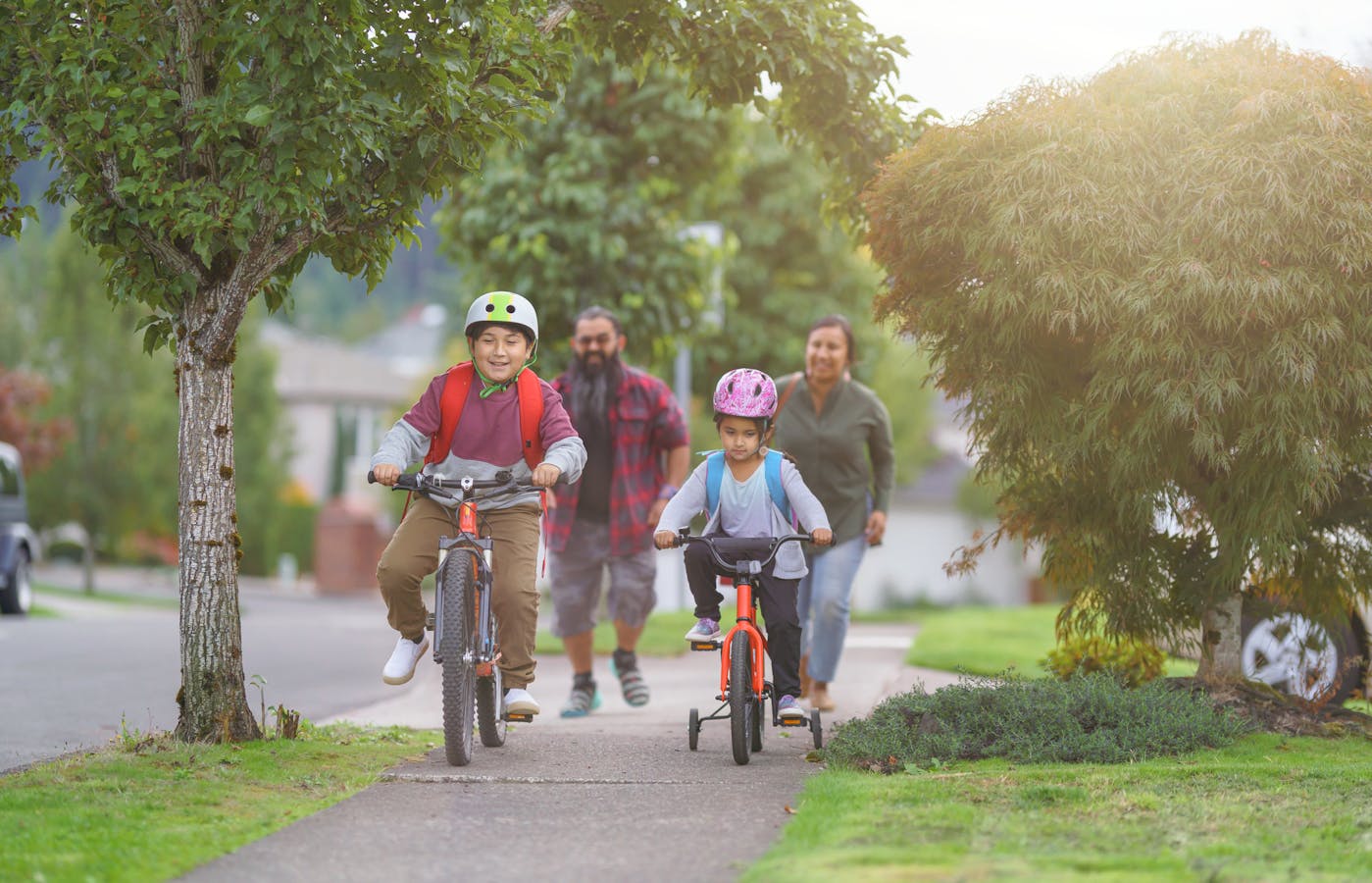Tap Into More Bike Infrastructure Funding
By: Kiran Herbert, PeopleForBikes' content manager

The League of American Bicyclists and Safe Routes Partnership collaborated on state-specific fact sheets for the Transportation Alternatives Program.
Looking to combat climate change and create healthier, more robust communities in the process, more cities are interested in funding safer streets for people walking and bicycling. Luckily, federal funds allocated under the Transportation Alternatives Program (TAP) are available for projects that expand travel choices, strengthen local economies, improve quality of life and protect the environment. Many TAP projects enhance smaller-scale, non-motorized projects, including bicycle facilities, recreational trails and road user safety assessments.
TAP funding comes from the Bipartisan Infrastructure Law, which PeopleForBikes lobbied for alongside the Safe Routes Partnership, the League of American Bicyclists and others. These efforts led to a 70% increase in funding for TAP, taking it from $800m a year to $1.4b a year on average — that means more money for important bicycle investments across the country.
In order to assist communities looking to apply for TAP funding, the League of American Bicyclists and Safe Routes Partnership collaborated on state-specific fact sheets. Each state's fact sheet lists out how much money the state gets for TAP, how much can be used for technical assistance, how much is set aside for recreational trails, the Metropolitan Planning Organizations (MPOs) that get money and, when possible, the dates that TAP competition opens/closes.
“We created these fact sheets because, in contrast to many transportation funding streams where states get to decide what to invest in, the Transportation Alternatives Program is specifically designed to fund locally identified projects. We want communities and advocates to know that this funding is for them,” said Marisa Jones, policy and partnerships director at Safe Routes Partnership. “Also, new this year, states can't transfer TAP funds to other uses as long as there are suitable projects that apply for the funds, so by raising awareness about who is eligible to apply, the types of projects that are eligible and when application dates are, our hope is that we will encourage enough applications that every penny of this program gets spent on its intended purposes.”
A variety of entities are eligible to apply for TAP funding:
- Local governments, such as city, town or county agencies
- Regional transportation authorities
- Transit agencies
- Natural resource or public land agencies
- School districts, local education agencies or schools
- Tribal governments
- Nonprofit organizations (although they must apply through a local government agency or quasi-governmental agency for contracting purposes)
- Metropolitan Planning Organizations representing an area with a population of 200,000 or less
- Any other local or regional governmental entity with responsibility for oversight of transportation or recreational trails
All 50 states receive TAP money, and there is funding set aside for communities of all sizes, from rural communities with less than 5,000 people to major metro areas. The fact sheets lay out each state’s TAP website, a baseline for how much money is available per state (this number will only increase annually through fiscal year 2026) and how much funding gets set aside based on community size, as well as any known deadlines and local contacts.
Jones notes that application dates are in flux and points to a Google spreadsheet that’s being updated in real time. If the listed TAP competition date has already passed, take note of the date — states will likely re-open competition around the same time next year.
New this year, states can get money specifically to help communities apply for the program and then deliver on projects. While some states are proactive about this, with the information listed on their respective websites, it’s a new thing and not all states are there yet. Jones encourages people to ask for the help they need and to reach out (marisa@saferoutespartnership.org) with any questions.
Again, as long as there are enough acceptable applications for TAP projects, this money can not be used to fund things like highways and roadway expansion. Please share these fact sheets widely with all state and local partners — we all have a role to play in building safe, bikeable communities.
State TAP Competition Fact Sheets
Related Topics:
